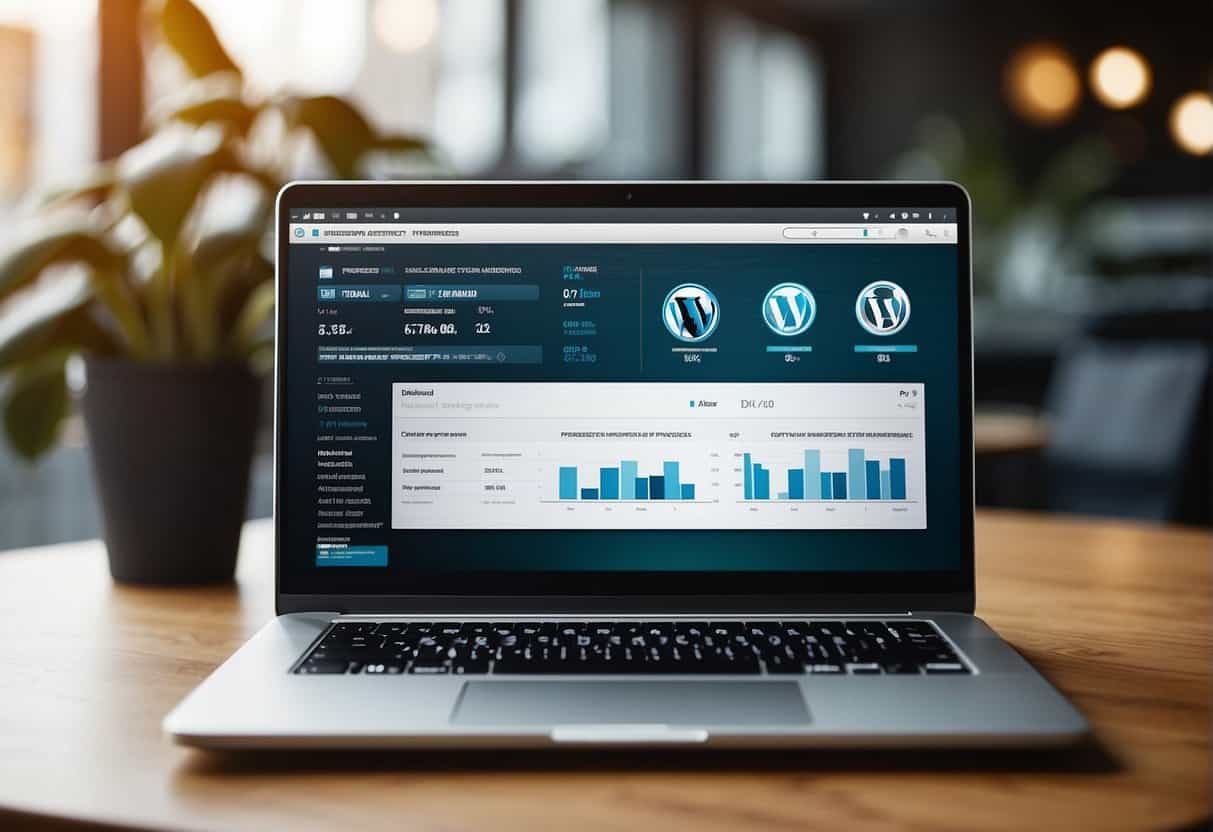Automating processes has become a cornerstone for efficiency, allowing you to streamline operations and allocate resources where they’re most needed. With the right tools, your agency can reduce manual tasks, minimize errors, and enhance client satisfaction.
To navigate the complexities of automation, it is crucial to identify which aspects of your work can be automated and to understand the tools that can assist you in this transformation. From project management and communication to reporting and billing, there are software solutions designed to target your specific needs. By leveraging these technologies, you can significantly cut down on time-consuming activities and shift your focus to strategy and growth.
Adopting automation requires a careful approach; it’s not just about picking software and expecting magic. Consider the integration with your current systems, the learning curve for your team, and the scalability to accommodate future growth. With thoughtful selection and implementation, you can harmonize your agency’s workflow, ensuring that every process is optimized for peak performance.
Laying the Foundation for Automation in Agencies
Effective automation relies on understanding your workflow, pinpointing repetitive tasks, and setting precise goals. Approaching automation in this structured way can significantly enhance the efficiency of your agency.
Understanding Agency Workflow
Mapping Current Processes: Before you initiate automation, you need to fully understand the existing workflow within your agency. Start by visualizing your current processes using flowcharts or diagrams. These visual aids should document each step of a project from initiation to completion, including who is responsible for each task and how information is transferred between stages.
- Staff Interviews: Engage with your team to gain insights into their daily tasks. Their input is valuable because they’re the ones who’ll be interacting with automated systems.
Identifying Repetitive Tasks
Pinpoint Inefficiencies: Scan your workflow for tasks that are repetitive and time-consuming. These could range from data entry to scheduling or even reporting. Create a table listing these tasks, the time they take up, and the potential for errors.
| Repetitive Task | Time Spent | Error Potential |
|---|---|---|
| Data Entry | 10 hrs/wk | High |
| Appointment Scheduling | 5 hrs/wk | Medium |
| Monthly Reporting | 8 hrs/wk | Low |
- Task Volume Analysis: Assess the volume of repetitive tasks. High-frequency tasks with low decision complexity are prime candidates for automation.
Setting Clear Automation Goals
Define Specific Objectives: Your automation goals should reflect key performance indicators (KPIs) such as time savings, accuracy improvements, or increased throughput. For example, you might aim to reduce manual data entry by 50% or improve report accuracy by 30%.
- Prioritize and Plan: Prioritize automation initiatives based on their potential impact and feasibility. Develop a clear implementation plan outlining short-term and long-term steps toward achieving these goals.
Selecting the Right Tools for Automation
Choosing the ideal automation tools is crucial to streamline your agency’s processes effectively. Focus on tools that integrate seamlessly with your existing systems and offer scalable features that grow with your business needs.
Automation Platforms
Automation platforms serve as the backbone of your technological strategy, enabling the synchronization of various applications. Zapier and IFTTT are examples of such platforms that can connect your disparate software, allowing them to work in tandem. These platforms help you automate tasks across your different apps, minimizing manual data entry.
Marketing Automation Tools
In marketing automation, selecting tools that align with your strategy is essential for maximizing campaign efficiency. HubSpot stands out for its comprehensive suite that not only automates email campaigns but also assists with landing pages, social media, and SEO analytics. This all-in-one solution facilitates refined targeting and improved follow-ups on potential leads.
Project Management Software
Efficient project management software like Trello, Asana, and Slack can transform your team’s coordination and productivity. Trello offers a flexible, card-based system for task tracking, while Asana provides more robust workflow features. Slack integrates with both to facilitate real-time communication, ensuring that team members stay informed of task progress and updates.
Customer Relationship Management
In customer relationship management (CRM), software like Salesforce and HubSpot CRM empower you to maintain detailed profiles on your leads and customers. With Salesforce, you get a platform that adapts to complex sales processes and offers extensive customization. HubSpot CRM provides a more straightforward interface that pairs well with its marketing automation tools.
Note: Remember to consider software compatibility with your current systems, availability of support, and the scalability to support your agency’s growth when selecting any of these tools.
Optimizing Agency Operations
Effective optimization of agency operations relies on integrating tools and strategies that streamline processes, increasing your productivity and potentially reducing operational costs.
Streamlining Client Onboarding
To streamline client onboarding, create standardized intake forms to capture all necessary information efficiently. Utilize Customer Relationship Management (CRM) systems to automate data entry and keep track of interactions. By establishing a clear onboarding process, you ensure consistent service and save time.
- Standard Intake Forms
- Consistency: Same information gathered every time.
- Efficiency: Quicker processing and less room for error.
- CRM Systems
- Automation: Less manual entry, more accuracy.
- Tracking: Monitor client interactions and history.
Improving Client Reporting
Leverage analytics tools to generate insightful client reports with real-time data. Tools like Google Analytics and bespoke dashboards can provide comprehensive reports that demonstrate your agency’s impact on client objectives.
- Real-Time Data: Offer up-to-date insights on campaigns.
- Visual Dashboards: Make data easily understandable for clients.
Enhancing Email and Social Media Marketing
Use email marketing platforms like Mailchimp to segment audiences and personalize emails, enhancing engagement. For social media, tools such as Buffer or Hootsuite facilitate social media scheduling, freeing up your time while maintaining a consistent online presence.
- Email Marketing: Tailored content for higher conversion rates.
- Social Media Scheduling: Regular posts without constant manual input.
By employing these specific tools and approaches, you upgrade your operational efficiency, improve services, and maintain a clear and effective line of communication with clients.
Leveraging Data and Analytics for Agency Growth
Growth for your agency is deeply intertwined with how effectively you harness data and analytics. The transformation into a data-driven agency unlocks potential for informed decision-making and strategic planning.
Tracking Marketing Data and Analyses
You must meticulously monitor your agency’s marketing data. This encompasses metrics like conversion rates, click-through rates, and customer engagement levels. To streamline this process:
- Implement Customer Relationship Management (CRM) tools to gather data from various touchpoints.
- Use analytics platforms to quantify campaign performance.
- Regularly review metrics to ensure alignment with your marketing goals.
By analyzing these facets, you refine your marketing strategies for better outcomes and sustainable agency growth.
Utilizing Real-Time Insights to Inform Decisions
Leveraging real-time data delivers a competitive edge. Here’s how:
- Business Intelligence (BI) tools assess current market trends and customer behavior.
- React promptly to analytics for optimizing campaigns and mitigating risks.
- Data-driven insights guide immediate strategic shifts to outpace competitors.
Use real-time data effectively to adapt to the market swiftly, making your agency more agile and responsive.
Building and Maintaining Client Relationships
Effective agency operations hinge on two fundamental processes: generating leads and delivering a stellar customer experience. These practices are vital for sustaining and expanding your client base.
Lead Generation and Nurturing
To establish a consistent stream of clients, lead generation is crucial. Begin by leveraging a Customer Relationship Management (CRM) software to organize potential leads. For instance, tools like AgencyAnalytics offer functionalities to track and analyze lead interactions. Use targeted strategies to attract leads:
| Method | Description |
|---|---|
| Content Marketing | Share valuable insights to entice interest. |
| SEO and SEM | Improve online visibility to attract leads. |
| Networking | Forge connections at events and social platforms. |
Once you’ve attracted leads, lead nurturing is key. Regular follow-ups through personalized emails or calls can build relationships, turning leads into clients. Share information they value, and educate them on how your agency can resolve their specific pain points.
Ensuring Customer Experience and Support
After securing a client, focus on customer experience to maintain the relationship. Client onboarding should be seamless, enlightening new clients about processes and expectations. Personalize interactions and swiftly address questions to exhibit your commitment to their success.
Client support also plays a pivotal role in customer retention. You can offer:
- 24/7 Help Desks: Ensure clients have access to assistance anytime.
- Knowledge Bases: Provide resources for clients to find quick solutions.
- Regular Check-ins: Schedule calls or meetings to discuss progress and feedback.
Remember, a positive customer experience cements long-term customer relationships and often leads to referrals, which are invaluable for agency growth.






